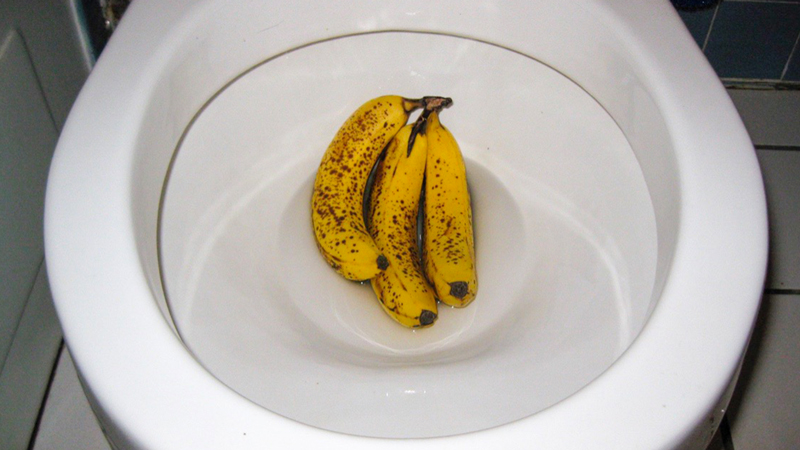We've uncovered the article about Is it safe to flush food (especially rice) down the toilet? listed below on the web and reckoned it made good sense to talk about it with you on my blog.

Intro
Many individuals are typically faced with the issue of what to do with food waste, particularly when it comes to leftovers or scraps. One common question that develops is whether it's fine to purge food down the toilet. In this post, we'll look into the reasons why people may take into consideration flushing food, the repercussions of doing so, and alternative approaches for appropriate disposal.
Reasons individuals could consider purging food
Lack of understanding
Some individuals might not understand the possible damage brought on by purging food down the toilet. They might wrongly think that it's a safe technique.
Convenience
Purging food down the bathroom might look like a quick and easy remedy to disposing of unwanted scraps, particularly when there's no nearby trash can available.
Negligence
In some cases, people may just choose to flush food out of sheer idleness, without thinking about the consequences of their actions.
Repercussions of flushing food down the toilet
Ecological impact
Food waste that winds up in rivers can contribute to pollution and damage aquatic environments. Furthermore, the water utilized to purge food can strain water resources.
Plumbing concerns
Purging food can result in clogged up pipelines and drains pipes, causing expensive plumbing repair work and aggravations.
Kinds of food that must not be purged
Fibrous foods
Foods with fibrous appearances such as celery or corn husks can obtain entangled in pipelines and trigger obstructions.
Starchy foods
Starchy foods like pasta and rice can take in water and swell, bring about blockages in pipelines.
Oils and fats
Greasy foods like bacon or cooking oils need to never be purged down the bathroom as they can strengthen and cause blockages.
Appropriate disposal methods for food waste
Making use of a garbage disposal
For homes geared up with garbage disposals, food scraps can be ground up and flushed via the plumbing system. Nonetheless, not all foods appropriate for disposal in this fashion.
Recycling
Certain food packaging materials can be recycled, lowering waste and lessening ecological impact.
Composting
Composting is an environment-friendly method to dispose of food waste. Organic products can be composted and used to improve soil for horticulture.
The importance of proper waste management
Lowering ecological injury
Appropriate waste monitoring methods, such as composting and recycling, help reduce contamination and maintain natural deposits for future generations.
Safeguarding pipes systems
By avoiding the practice of flushing food down the toilet, house owners can protect against expensive plumbing repair services and keep the integrity of their plumbing systems.
Conclusion
In conclusion, while it may be alluring to flush food down the bathroom for comfort, it is very important to understand the potential effects of this action. By taking on proper waste administration techniques and throwing away food waste properly, individuals can contribute to healthier pipes systems and a cleaner atmosphere for all.
FLUSH FOOD DOWN THE TOILET?
FLUSHING FOOD CAN CAUSE BLOCKED DRAINS IN YOUR HOME
All of the plumbing fixtures in your home are connected to the same sewer pipe outside of your home. This outdoor sewer pipe is responsible for transporting all the wastewater from your home to the Council sewer mains. Even small pieces of food that go down the kitchen sink can cause problems for your sewer. It should therefore be obvious that flushing larger bits of food, such as meat, risks a clog in either the toilet itself or the sewer pipes. Flushing greasy food is even more problematic because oil coagulates when it cools, coating the interior lining of your pipes.
THE TOILET IS NOT A BIN
Food isn’t the only thing that people shouldn’t be flushing down the toilet. People use the toilet to dispose of all kinds of things such as tampons, makeup wipes, dental floss, kitty litter and even underwear. Water goes to great lengths to educate residents about the high costs and stress placed on wastewater treatment systems simply from people flushing the wrong stuff down the toilet. It costs taxpayers millions of dollars each year, and homeowners thousands in blocked drain repairs.
FLUSHING FOOD IS A WASTE OF WATER
Flushing food is a waste of our most precious resource - water. In June this year Level 1 water restrictions were introduced to protect water supply from drought conditions. Much of New South Wales continues to be affected by prolonged drought with recent figures revealing up to 97 per cent of the state remains in drought. Depending on whether you have a single or dual flush toilet, every single flush uses between five and 11 litres of water. In the current climate this is a huge amount of water to be wasting on flushing food that should be placed in the bin (or better yet, the compost).
https://www.jabplumbingsolutions.com.au/blog/can-you-flush-food-down-the-toilet

We were made aware of that editorial on Is it safe to flush food (especially rice) down the toilet? through a pal on our other web blog. Enjoyed our write-up? Please quickly share it. Help someone else locate it. Thank you so much for your time spent reading it.
Click Here